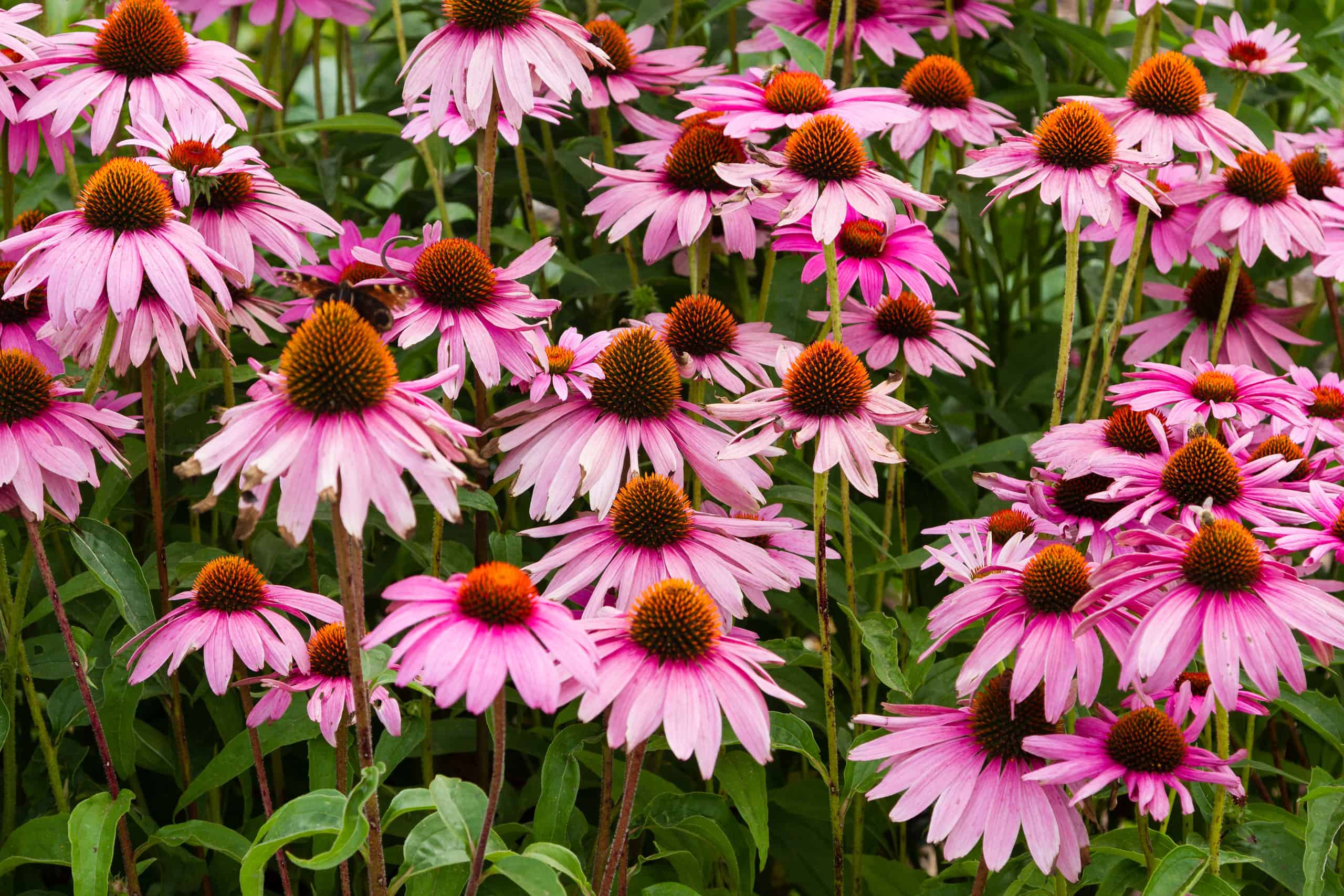Some people might say that spring and summer are the best times of year to garden in New England, but did you know that an abundance of vibrant flowers blossom during fall? Massachusetts can get chilly as temperatures begin to drop, but these hardy flowers thrive in the cooler weather. Today we’ll explore the eight most colorful fall blooming flowers that you can add to your garden.
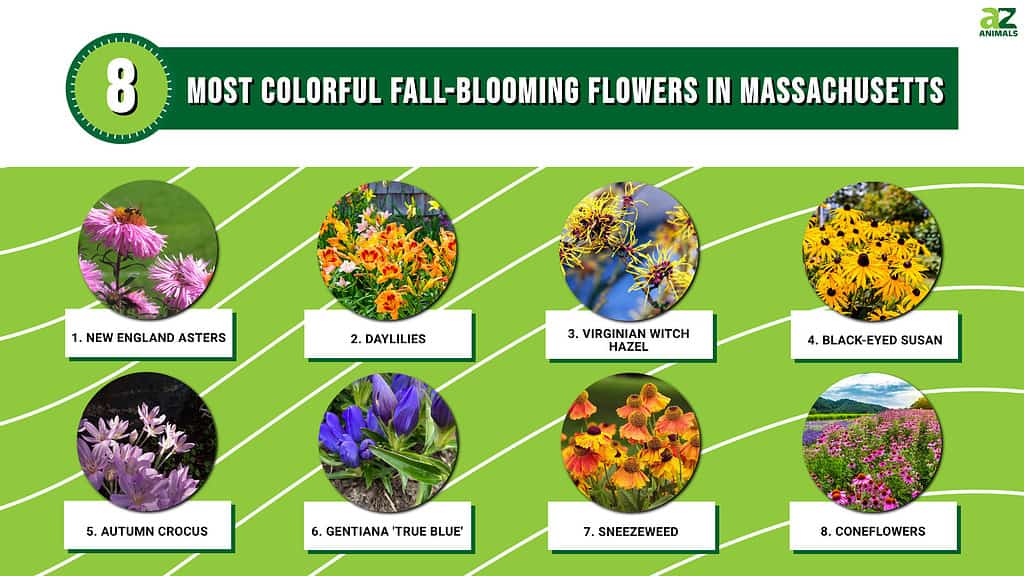
1. New England Asters
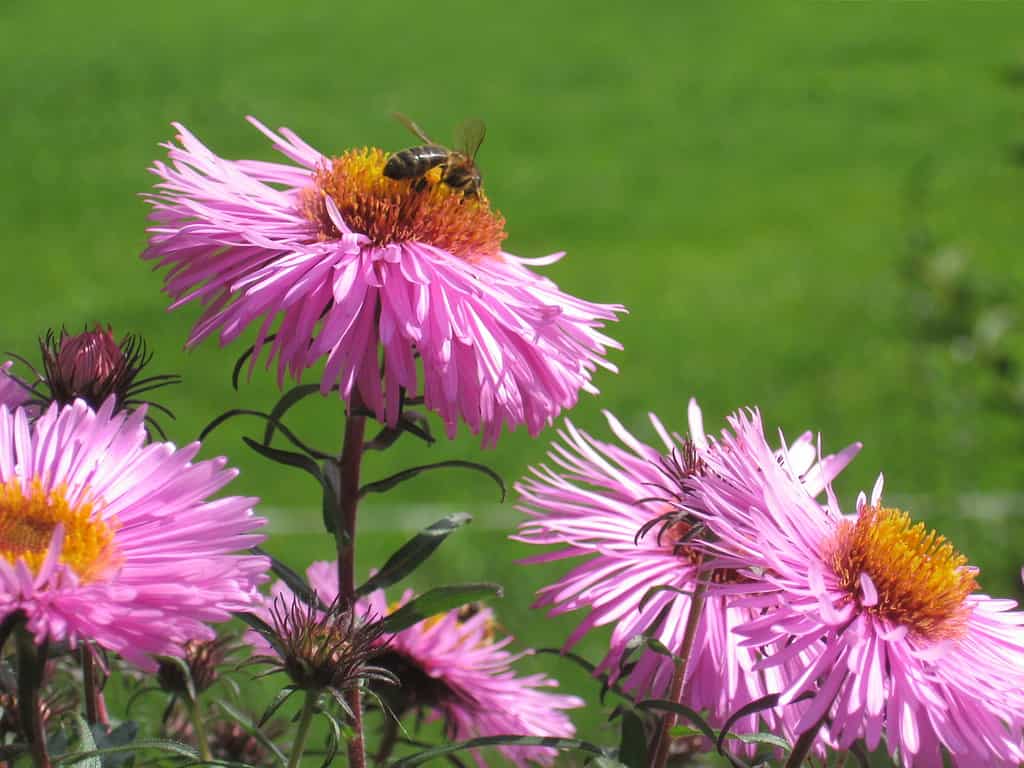
Insects love New England asters because they provide a wealth of late-season pollen.
This beautiful purple flower begins blooming in early fall. Perhaps best known for their ability to attract butterflies and birds to a garden, they also offer a pop of color and are easy to care for. New England asters grow well in either sunlight or shade and can grow at a quick pace. This means that even if you’re late to start planting, they’ll likely still reach their full potential by the end of the season.
2. Daylilies
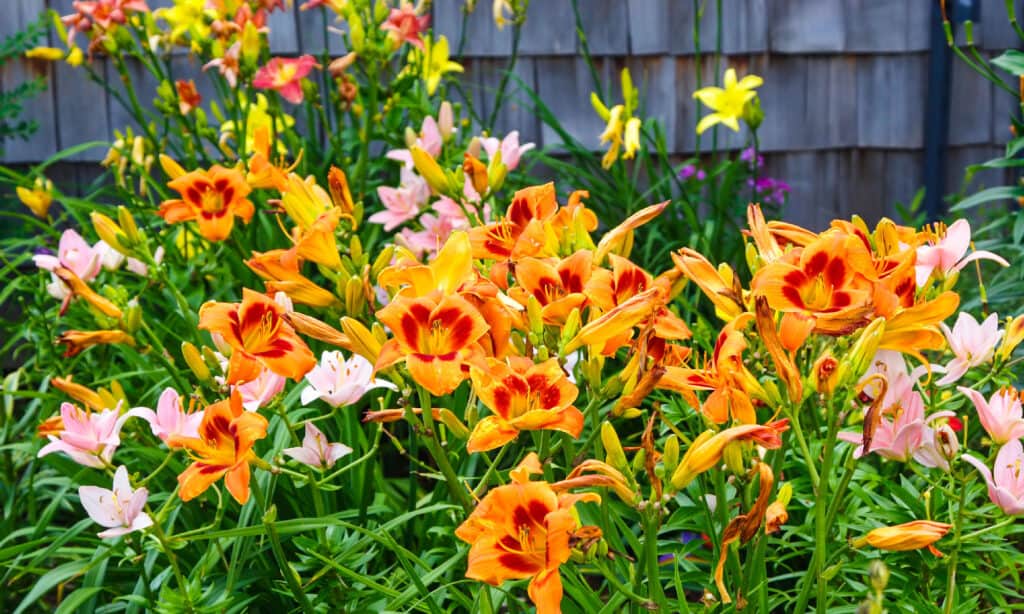
There are roughly 80,000 varieties of daylilies available to choose from.
©iStock.com/onepony
While we’re on the subject of low-maintenance flowers, daylilies are some of the simplest to care for of all. This flower thrives in a variety of conditions, able to endure both low moisture and high heat. It comes in an array of colors, such as white, yellow, orange, red, pink, and purple. Some species of daylilies bloom multiple times a year, first during spring and again at the beginning of autumn, enabling you to enjoy their beauty over and over again.
3. Virginian Witch Hazel

Witch hazel is a popular component in treatment for skin conditions.
©Anna Gratys/Shutterstock.com
This unassuming flower may look delicate, but it is hardy enough to bloom well into late fall. Virginian witch hazel is a flower native to the Northeast, often found growing in Massachusetts. When it first blooms, the petals have a green tone to them, which slowly fades into a bright yellow as the season progresses. This flower has many medicinal purposes, making it functional as well as aesthetically pleasing. However, Japanese beetles are known to feed on this plant, so you’ll want to be on the lookout if you decide to add this to your garden.
4. Black-Eyed Susan
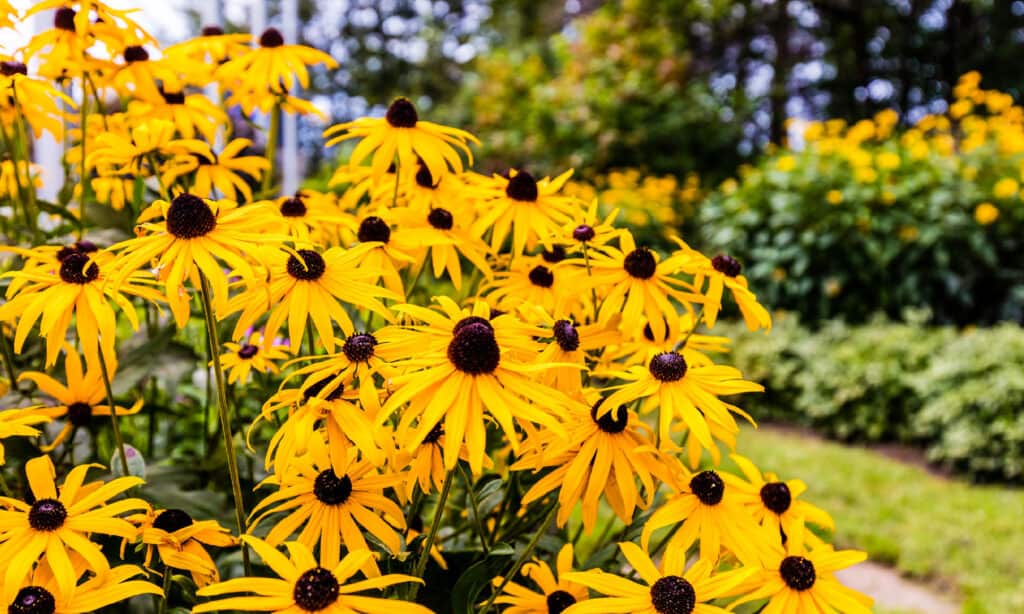
The black-eyed Susan is a popular perennial due to its hardiness and beauty.
©iStock.com/Dopeyden
Another robust and low-maintenance flower to add to your garden is the black-eyed Susan. This flower is able to grow in a variety of conditions and withstand harsh weather. As long as there is a sufficient amount of sunlight, the black-eyed Susan will thrive. However, they can be successful in low-sunlight areas as well, just growing to shorter heights. Much like the New England asters, they have a reputation for attracting butterflies. This is a great choice if you’re seeking to make your garden more lively.
5. Autumn Crocus
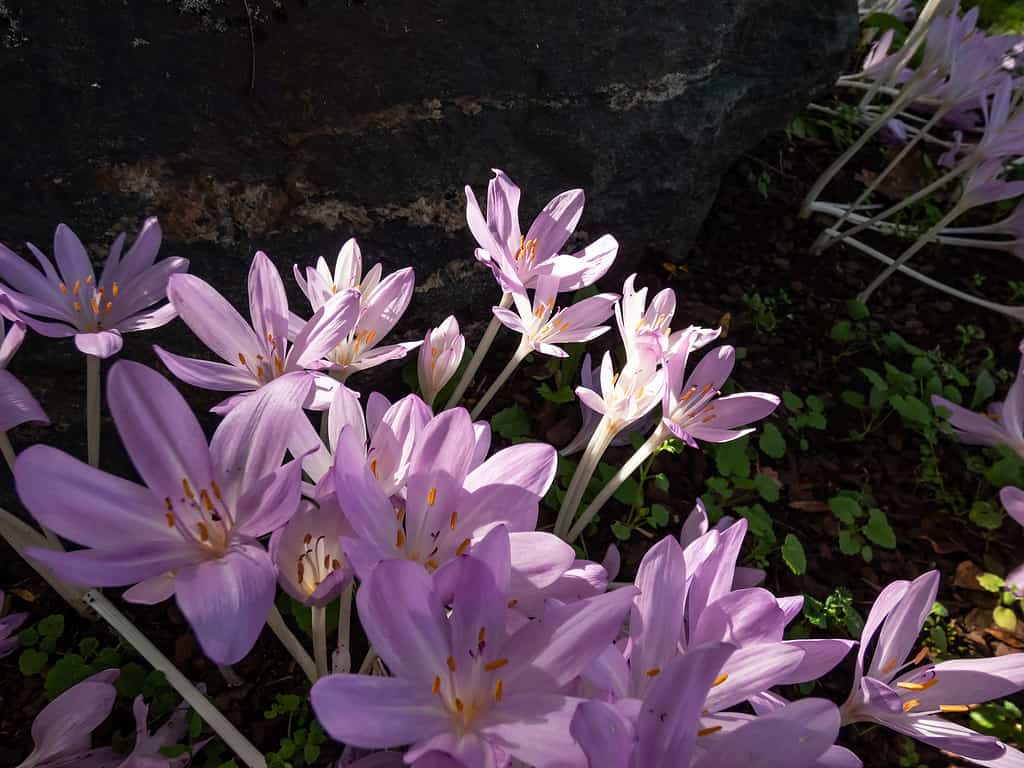
These flowers often grow directly from the soil without leaves.
©Kristine Radkovska/ via Getty Images
Although this flower is called a crocus, it’s actually not a crocus at all. Belonging to the genus Colchicum, its name only comes from the visual similarities it shares. With broad purple petals and a white throat, it’s easy to see where the confusion came from. This flower is poisonous, making it a good choice if your garden is being picked over by unwanted visitors. Rabbits, deer, and other small rodents avoid this flower, ensuring you’ll be able to enjoy its beauty long into the fall. However, due to its toxicity, it is recommended to keep pets away and wash your hands after handling this flower.
6. Gentiana ‘True Blue’
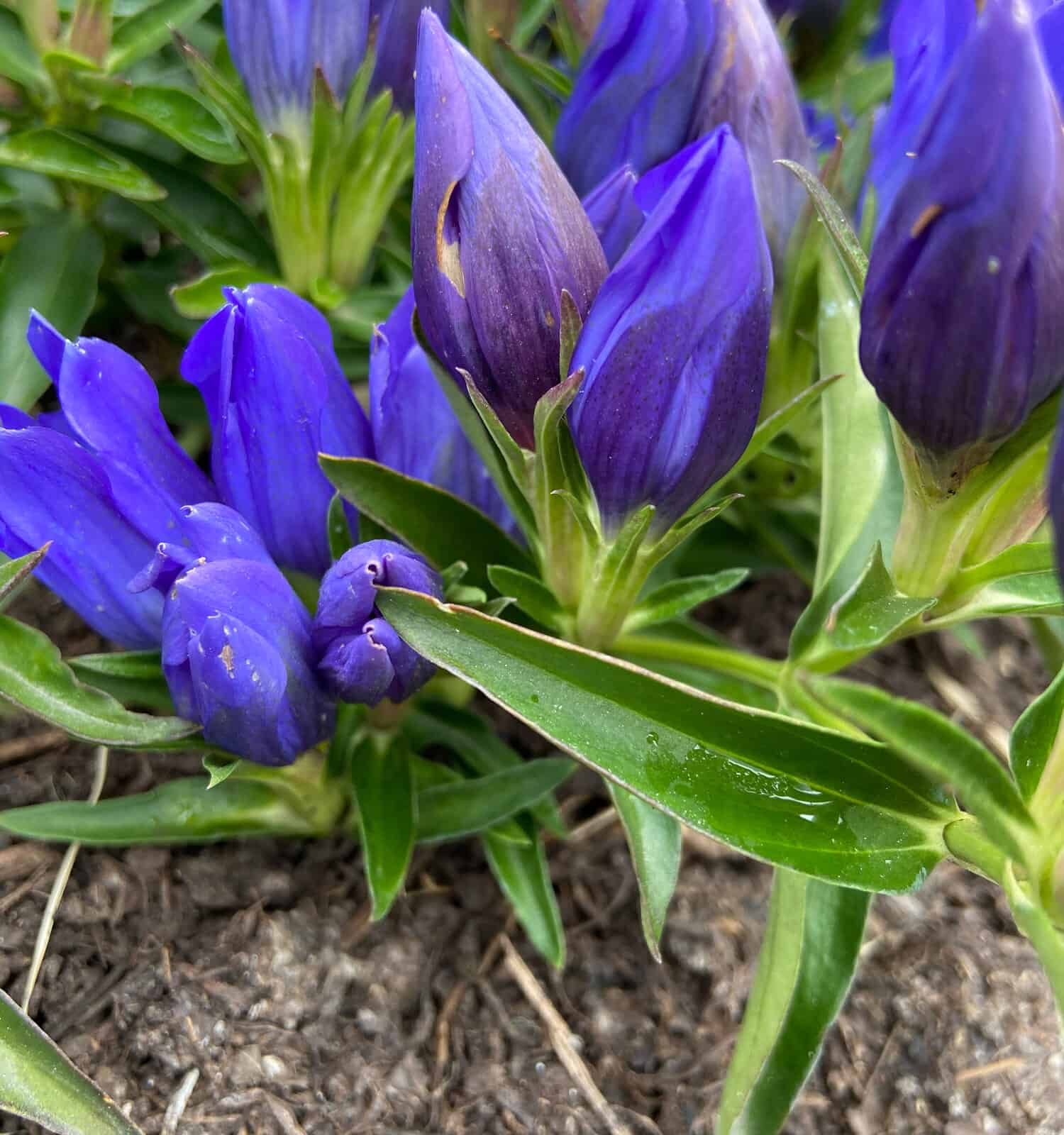
The true blue variety of
Gentianaflowers will add a beautiful blue hue to your garden.
©MorganCJ/Shutterstock.com
When fall comes around, many flowers die off and leave gardens looking a bit duller. If you’re concerned about having gaps in your flowers’ bloom times, the addition of true blue gentians might be the solution. This vibrant blue flower introduces a pop of color that will help transition your garden from late summer to early fall. Like most of the other flowers we’ve listed, true blue gentians are low maintenance and easy to grow. This flower is best grown in Zone 4 to Zone 7, which Massachusetts is a part of.
7. Sneezeweed
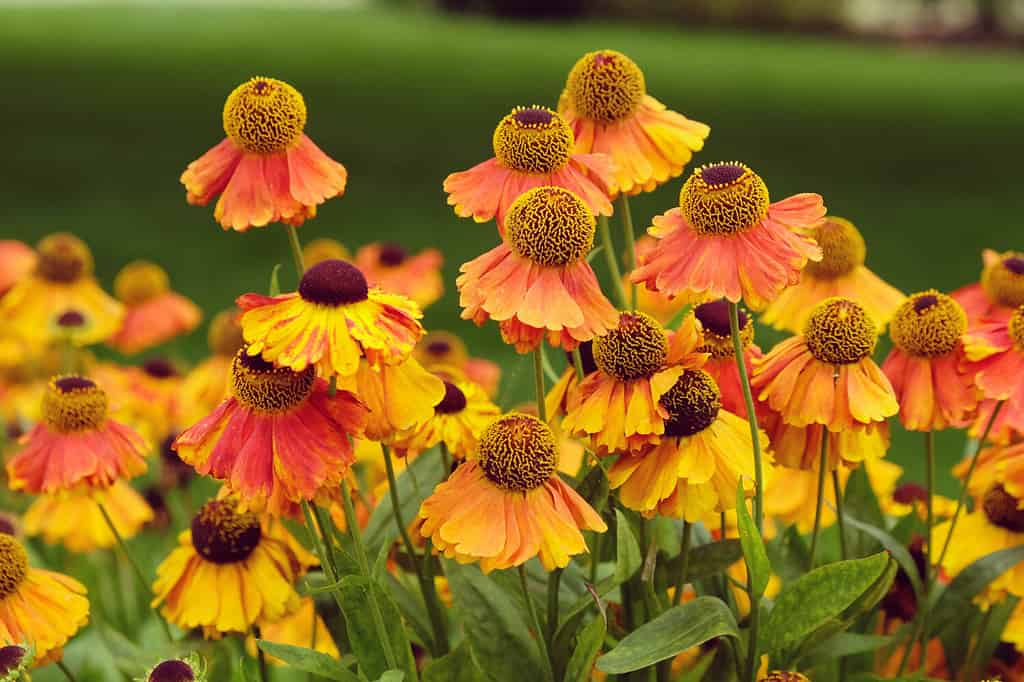
The genus name,
Helenium, was inspired by the famous Helen of Troy.
©Alex Manders/Shutterstock.com
Blooming in late summer and early fall, this beautiful flower is commonly known as sneezeweed. This nickname comes from its use during ancient times. The leaves of this plant were plucked, dried, and ground into a powder which was then inhaled to induce sneezing. Unlike many of the flowers we’ve covered so far, sneezeweed may be a bit more labor-intensive to grow. It prefers lots of sunlight, water, and space to grow. Take care not to accidentally overcrowd this flower, as it can stunt its growth.
8. Coneflowers

Coneflowers are one of the most popular types of wildflowers in North America.
©iStock.com/Jasmina81
Echinacea, more commonly known as “coneflowers,” is a part of the daisy family. These flowers are beloved by both animals and humans alike. They are known for attracting bugs, butterflies, and birds but they also have beneficial medicinal properties as well. This flower is used as a remedy for a variety of ailments, such as the common cold and coughs. These flowers are most commonly bright pink but also come in shades of purple, orange, yellow, and red.
Fall can be a tricky time of year to garden due to the unpredictable temperature fluctuations. Luckily, these fall-blooming flowers are relatively easy to grow and maintain, making them a great choice for novice and expert gardeners alike. It doesn’t matter if you’re looking to attract more butterflies and birds or extend the beauty of your garden until the first frost. There is a wealth of flowers capable of growing well into the autumn in Massachusetts.
Summary of the 8 Most Colorful Fall-Blooming Flowers in Massachusetts
| Flower | Bloom Time | |
|---|---|---|
| 1 | New England Asters | Early Fall |
| 2 | Daylilies | Spring and Fall |
| 3 | Virginian Witch Hazel | Fall |
| 4 | Black-Eyed Susan | Early Summer to Fall |
| 5 | Autumn Crocus | Fall |
| 6 | Gentiana ‘True Blue’ | Late Summer to Early Fall |
| 7 | Sneezeweed | Late Summer to Early Fall |
| 8 | Coneflowers | Fall |
Thank you for reading! Have some feedback for us? Contact the AZ Animals editorial team.

